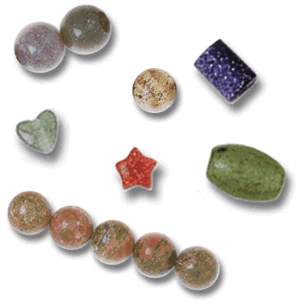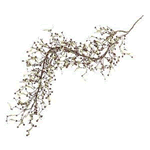|
BAND OF GYPSYS
"Maybe
I'll live in a tent, overlooking a mountain stream..."
interview
with Keith Altham, for Melodymaker, summer 1970
 In
June 1969 Kent born bassist Noel Redding discovered that Jimi Hendrix
had decided to replace him with Billy Cox. In August, the new band
"Gypsy Sons And Rainbows" headlined the Woodstock Festival,
Bethel, New York. By November 69 Mitch Mitchell had a solo project.
Jimi was working with Billy Cox, Juma Sultan and drummer Buddy Miles,
a line up he came to call the Band Of Gypsys. On 31st December 1969
they played the first of four concerts at Fillmore East: rights to
the live recordings cleared Jimi's contractual debt to Ed Chaplin.
Jimi wasn't too satisfied with In
June 1969 Kent born bassist Noel Redding discovered that Jimi Hendrix
had decided to replace him with Billy Cox. In August, the new band
"Gypsy Sons And Rainbows" headlined the Woodstock Festival,
Bethel, New York. By November 69 Mitch Mitchell had a solo project.
Jimi was working with Billy Cox, Juma Sultan and drummer Buddy Miles,
a line up he came to call the Band Of Gypsys. On 31st December 1969
they played the first of four concerts at Fillmore East: rights to
the live recordings cleared Jimi's contractual debt to Ed Chaplin.
Jimi wasn't too satisfied with  the
album that was cut, (released shortly before his death) "From
a musician's point of view it was not a good recording, and I was
out of tune on a few things" By the end of January Jimi had walked
off stage at another NY gig, saying the band "weren't getting
it together", and that was the end of the Band of Gypsys. the
album that was cut, (released shortly before his death) "From
a musician's point of view it was not a good recording, and I was
out of tune on a few things" By the end of January Jimi had walked
off stage at another NY gig, saying the band "weren't getting
it together", and that was the end of the Band of Gypsys.
In February
the Jimi Hendrix Experience reformed, but they never recorded or performed
together again. After recording for the movie Rainbow Bridge
on Maui in July, Jimi returned to the UK for the Isle of Wight festival,
but a European tour was abandoned. On September 18th 1970, Jimi Hendrix
died in his girlfriend's flat (under the Samarkand Hotel, Notting Hill,
London). Band of Gypsys is the only live album released in his lifetime:
it shows Hendrix moving away from special effects towards a "blacker",
funk, soul and jazz oriented guitar. Despite the artist's own jaded
opinion, and some uneven passages, it has become one of the highlights
of Jimi Hendrix's hugely successful posthumous career.
Every pitcher goes too often to the
well, if you sup with the devil you should take a long spoon... Great
politicial figures and legendary rockstars are alike in this, their
careers end in failure; and they recover amazingly once they are dead.
from
"Hendrix, a biography" by Chris Welch, Ocean Books Ltd; London
1972 Not hagiography.
See also Fender
UK; source of Woodstock image
|
|
HISTORY
OF IDEAS
 In
1905, in less than seven months, Einstein wrote five history-making
papers. He proposed the particle theory of light, developed a method
to measure molecular dimensions, explained the long-puzzling Brownian
motion, developed the theory of special relativity, and he finished
his intellectual sprint by producing the world's most famous equation,
E = mc2.
Five papers that shook the world (Physics World January 2005) In
1905, in less than seven months, Einstein wrote five history-making
papers. He proposed the particle theory of light, developed a method
to measure molecular dimensions, explained the long-puzzling Brownian
motion, developed the theory of special relativity, and he finished
his intellectual sprint by producing the world's most famous equation,
E = mc2.
Five papers that shook the world (Physics World January 2005)

Neurobombs are exploding all the time. In what sense do they change
our reality? Did Einstein's papers start the domino fall of the certainties
that led to the liberal  sixties,
radical politics, post-modernism, rock and roll? There is a complex
interface between neuroscience and physics, I didn't make that up. Is
there a barrier that might be broken? I don't know. It's been a hundred
years. We may be about to settle into three thousand years of stasis,
our present way of life involuting, maybe through the scarcities ahead,
into a baroque neo-feudalism. More optimistically, you could say we're
overdue for a big one. sixties,
radical politics, post-modernism, rock and roll? There is a complex
interface between neuroscience and physics, I didn't make that up. Is
there a barrier that might be broken? I don't know. It's been a hundred
years. We may be about to settle into three thousand years of stasis,
our present way of life involuting, maybe through the scarcities ahead,
into a baroque neo-feudalism. More optimistically, you could say we're
overdue for a big one.
Time
Considered As A Helix Of Semi-Precious Stones (Samuel
Delaney 1968) An sf classic, from one of sf's great literarti. "
Yikes! I was looking for a science fiction story and instead got a longwinded
literary description of a  costume-and-name-changing
Brooklyn street thug and how he unloaded a big score while evading the
cops..." Disappointing to some, post-modern to others, it's true
there's nothing in the story that explains the mystic charm or the proliferation
of that poem of a title. Got to be a meme. Around and around we go,
it'll take a lot to break us out of this attractor. costume-and-name-changing
Brooklyn street thug and how he unloaded a big score while evading the
cops..." Disappointing to some, post-modern to others, it's true
there's nothing in the story that explains the mystic charm or the proliferation
of that poem of a title. Got to be a meme. Around and around we go,
it'll take a lot to break us out of this attractor.
|





 In
1905, in less than seven months, Einstein wrote five history-making
papers. He proposed the particle theory of light, developed a method
to measure molecular dimensions, explained the long-puzzling Brownian
motion, developed the theory of special relativity, and he finished
his intellectual sprint by producing the world's most famous equation,
E = mc2.
In
1905, in less than seven months, Einstein wrote five history-making
papers. He proposed the particle theory of light, developed a method
to measure molecular dimensions, explained the long-puzzling Brownian
motion, developed the theory of special relativity, and he finished
his intellectual sprint by producing the world's most famous equation,
E = mc2.

 costume-and-name-changing
Brooklyn street thug and how he unloaded a big score while evading the
cops..." Disappointing to some, post-modern to others, it's true
there's nothing in the story that explains the mystic charm or the proliferation
of that poem of a title. Got to be a meme. Around and around we go,
it'll take a lot to break us out of this attractor.
costume-and-name-changing
Brooklyn street thug and how he unloaded a big score while evading the
cops..." Disappointing to some, post-modern to others, it's true
there's nothing in the story that explains the mystic charm or the proliferation
of that poem of a title. Got to be a meme. Around and around we go,
it'll take a lot to break us out of this attractor.